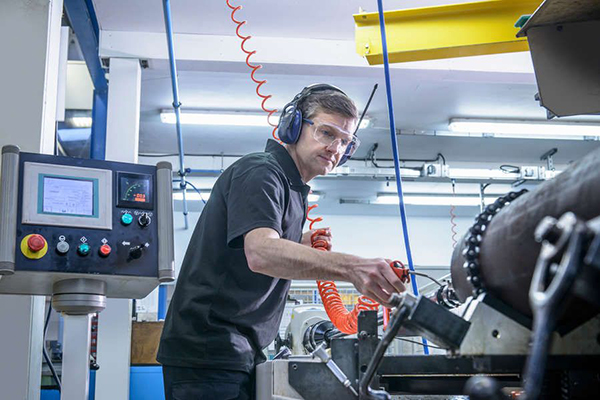The penalties for poor maintenance can be high—in energy production, loss of revenue and component costs, as well as fines levied for non-delivery. But contrast this with time and/or operation count-based maintenance where a piece of equipment gets maintained whether it needs it or not. This is labor intensive and ineffective in identifying problems that develop between scheduled inspections—so not cost-effective either.
What if you could predict the condition of equipment by performing periodic (offline) or continuous (online) equipment condition monitoring. The ultimate goal would be to perform maintenance at a scheduled point in time when the maintenance activity is most cost-effective and before the equipment loses performance within a set threshold. The result would be a reduction in unplanned downtime costs due to equipment failure—where costs can be in the hundreds of thousands per day depending on industry.

Enter predictive maintenance
The “predictive” component of predictive maintenance stems from the goal of determining the future trend of the equipment’s condition. This approach uses principles of statistical process control to predict at what point in the future maintenance activities will be appropriate. Most predictive inspections are performed while equipment is in service, thereby minimizing disruption of normal system operations. Adoption of predictive maintenance can result in substantial cost savings and higher system reliability.
Attention automotive companies – you are predicting but not predicting enough
Eight out of ten automotive companies are currently working on predictive maintenance projects to improve the cost-performance ratio of products, equipment and systems. However, the commitment is often exhausted in collecting only operational data, according to an investigation by the management consultancy Roland Berger. In addition to budget, over half of the companies interviewed lacked a clear strategy and the will to change toward smart services.Mr. Feldmann, partner at Roland Berger: “Predictive maintenance is no longer a question of the technical possibilities but of the corporate culture and thinking. Many companies are shying away from the transformation of their business model and the radical changes that come with it for the entire organization.”
Automotive executives – you need a digital mindset…
The most important prerequisite for a successful transition from a reactive to a predictive approach is a “digital mindset”. This includes, among other things, a flexible, agile and service-conscious organization in which the customer challenges are known and in focus.The Roland Berger investigation concluded that too often, “topics such as digitization, big data, IIoT and predictive maintenance are understood as purely technological advances. But that is far too short thought. In fact, this is a business transformation that focuses on end user needs. If this succeeds, companies will change from pure technology users and data collectors to service-oriented value-adding partners and will be successful in the long term.”
…and an easy entry point
To minimize the risk of failure, companies need a fast and low-risk entry to IoT. That’s why we have developed the IFS IoT Business Connector. It lets companies connect to sensor data, analyse and extract actionable observations and configure IFS business software (automatically) to respond to these observations the moment they are received.
Goal – Connect IFS business software to IoT sensor data in order to enable further automation and increase efficiency and agility of business processes. The automotive industry needs high-performance logistics (just-in-time / just-in-sequence / distributed production) so the period of maintenance downtime should be reduced to a minimum—and that can be achieved by predictive maintenance.
How – The solution utilizes the MS Azure IoT Suite to provide a scalable analytics platform. This is used to transform sensor data into actionable observations for which it is possible to configure responses from within the IFS business software, such as a maintenance task for the inhouse service team.
Why – To enable customers in the automotive industry to start small with adoption of IoT but provide a scalable solution that allows IoT driven processes to grow across other areas while their experience increases over time. So, my advice is to start with a smaller installation for predictive maintenance and then to roll it out into other areas after the pilot is stable and running well.



